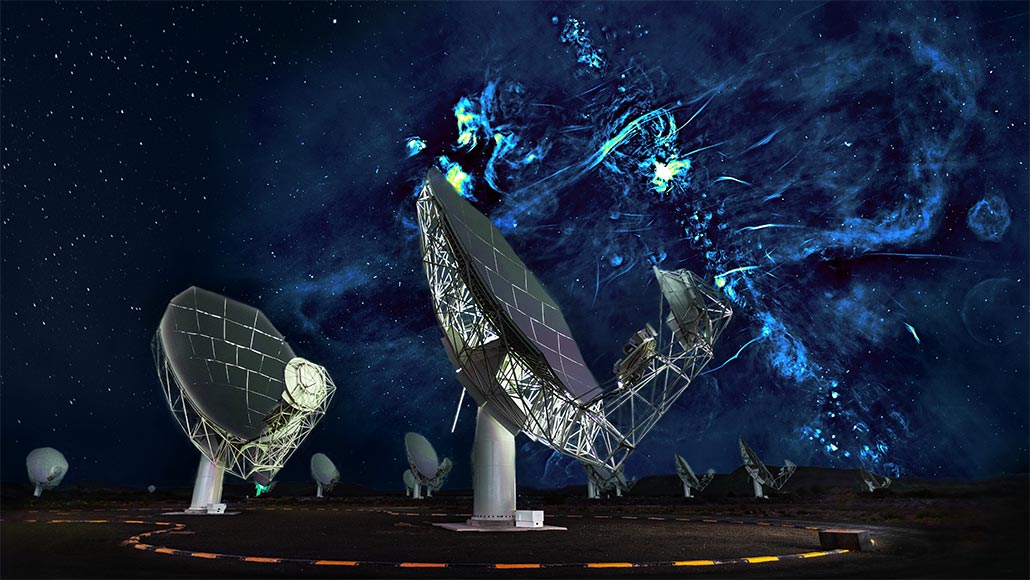
The MeerKAT telescope array (pictured) spotted two enormous radio bubbles emerging from the center of the Milky Way (seen overlaying the night sky in this composite image). The bubbles are faint structures that extend to the upper right and lower left.
SARAO, Univ. of Oxford